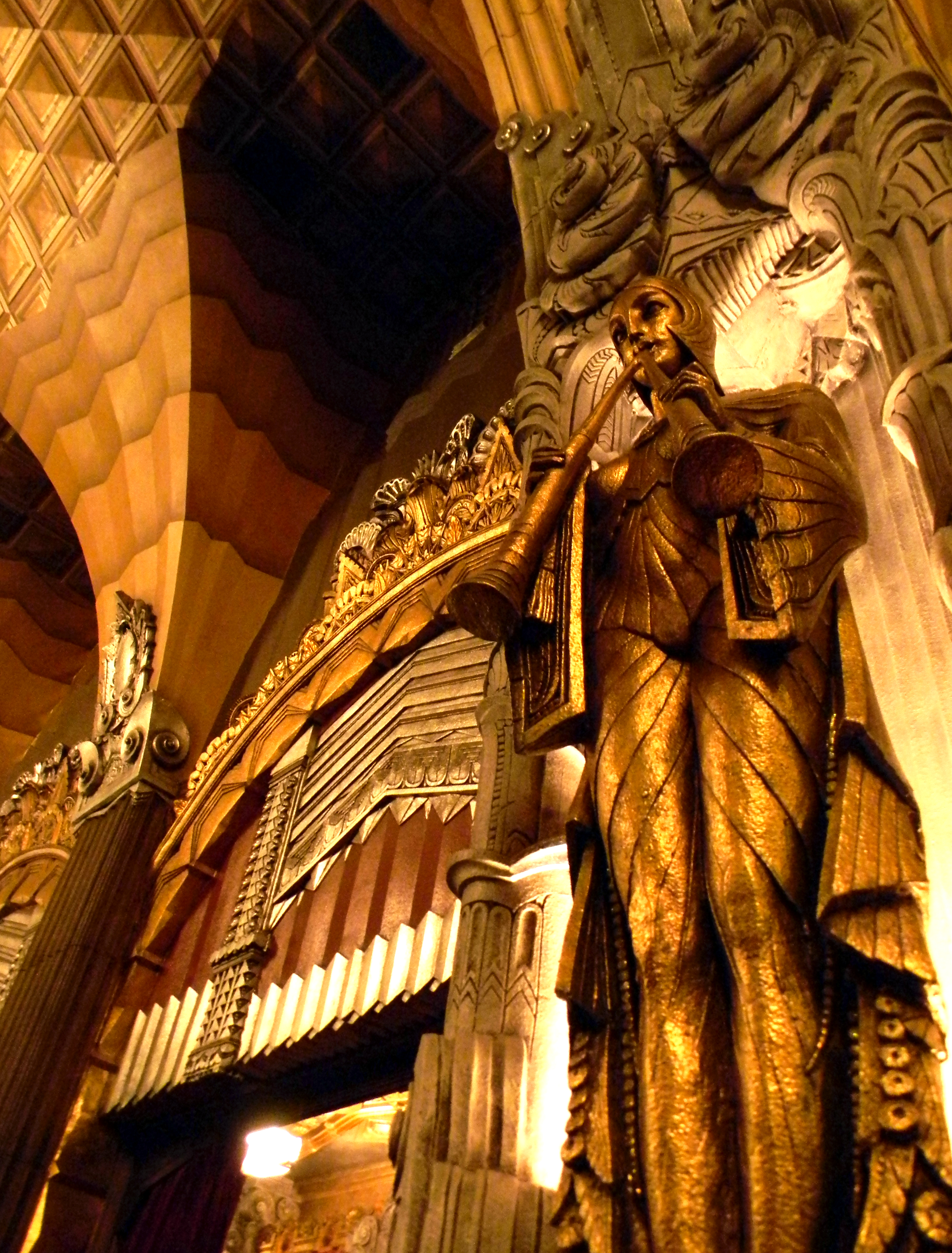Artscapes: Columnist explores Hollywood Boulevard’s iconic theaters, the Pantages and Grauman’s Chinese Theatre

The interior of the famous Pantages Theatre reflects Art Deco design, popular at the time of the theater’s 1930 construction.
Before You Go:
Parking: $10 (varies by lot)
Pantages Tickets: Balcony seats typically begin at $25 (prices vary by seat and show)
Grauman's Tour Tickets: $13.50
Grauman's Movie Tickets: Standard rates apply
By Lauren Roberts
Nov. 2, 2011 12:12 a.m.

By day, the faded letters of the Pantages Theatre aren’t much to look at.
Sandwiched between the plentiful glitz of Hollywood Boulevard, the signage is a deceptive preview to what is arguably Los Angeles’ most opulent theater.
I’d be lying if I said that my first trip to the 81 year-old Art Deco theater was anything less than impressive. Once alight, its nighttime persona proves far more bewitching than by day.
The theater’s red carpeted lobby is a luxurious step back to the age of old Hollywood glamour. Angular kaleidoscopic architectural details are complemented by geometric chandeliers hanging from vaulted ceilings.
Nearly every inch of the lobby walls and pillars are heavily adorned with gilded gold and silver figures representing the modern technology of their period ““ one sculpture releases an airplane to the sky, another cranks a film camera.
Though now home to live theater, when the Pantages opened on June 4, 1930, it was intended for film, spurred in part by the increasing popularity of the first “talkie” productions.
The Pantages remained intrinsically tied to film, serving host to the Academy Awards throughout the 1950s before later reopening in 1977 as a performance venue.
And despite seating roughly a little more than 2,700 people, the theater maintains an intimate feel with universally good views of the velvet curtained stage. Seeing a show costs a notch more than a movie ticket, but the vintage theater experience is well worth the $25 balcony price tag for a quality night out on Hollywood Boulevard.
Touristy as it is, an evening walk down the boulevard’s expansive Walk of Fame is a definite requirement for those living in Los Angeles. The prevalent neon, bright flash bulbs, marquees and star-studded sidewalk adornments are easy reminders of why the movie industry continues to fascinate.
Just down the street from the Pantages, the pagoda-themed Grauman’s Chinese Theatre also stands on the Walk of Fame, offering an equally grand example of old Hollywood allure.
More than 200 handprints, footprints and alternative prints make up the 1927 theater’s concrete entrance ““ featuring prints of actors as legendary as Jimmy Stewart and John Wayne, and as recent as the wand impressions of the young Daniel Radcliffe, Emma Watson and Rupert Grint.
The concrete celebrity collage is an entertaining game of “I Spy” ““ following no apparent chronology and remarkably intact for aging cement.
There’s an undeniable giddiness that comes with standing in the shoe prints of icons. I found it amusing to compare the fit of my hands in the prints of Clint Eastwood and Steve McQueen, and the lack of fit in the likes of Shirley Temple.
The fanciful dragon-arched building still functions as a movie theater and is home to regular film premieres.
A mere stroll down Hollywood Boulevard allows for plenty of opportunities for encounters with the camera-wielding and gawking, and sometimes it’s okay to get a little star struck.
Email Roberts at [email protected] if you’re interested in discovering the best of Los Angeles’ arts and history. “Artscapes” runs every Wednesday.

